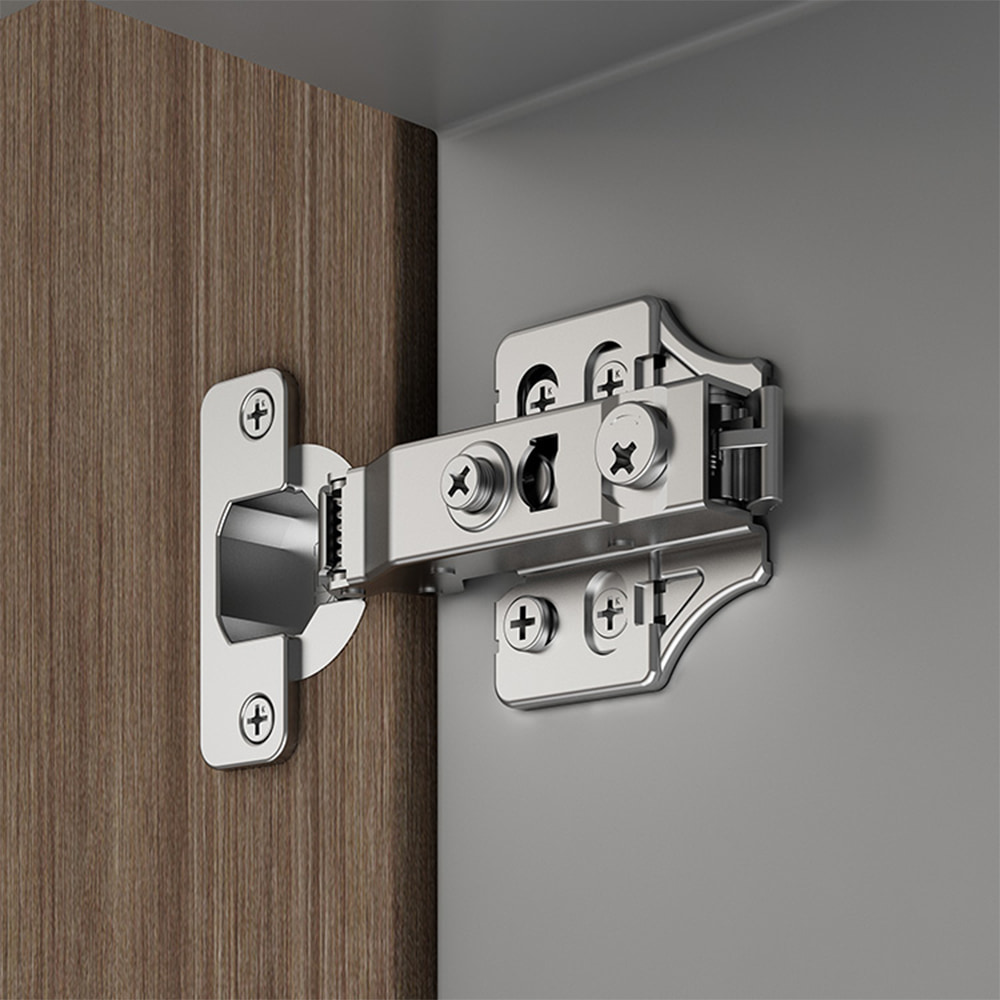If your cabinet doors are crooked, won't close properly, or keep rubbing against each other, you don't need to replace them - just adjust the hinges. Modern cabinet hinges are all equipped with built-in adjusting screws, allowing you to fine-tune the position of the door from multiple directions. Now we'll introduce how you can achieve professional-level alignment with just a cross-head screwdriver, allowing your cabinets to run smoothly and unobstructed again.
Step 1: Assess the Door Alignment
Before starting the adjustment, you need to carefully check the current position of the cabinet door first. Observe whether the cabinet door is rubbing against the adjacent cabinet door or the cabinet body, whether there are uneven gaps, or whether the cabinet door extends too far or is installed too deeply. Through careful observation, lay the foundation for the subsequent adjustments.
Next, open and close the cabinet door several times to feel if its movement is smooth and record the problems. In addition, to compare the effects before and after adjustment more intuitively, you can take a few photos before starting. In this way, even if there are deviations during the adjustment process, you can easily restore the original state.
Step 2: Side-to-Side Adjustment
The left and right adjusting screws are mainly used to control the horizontal position of the cabinet door. By rotating these screws, you can fine-tune the left and right positions of the cabinet door, thus keeping the door panel neatly aligned with the adjacent cabinet doors or the edges of the cabinet body.
If you want to bring the cabinet door close to the hinge side, please turn the screw clockwise. To keep the cabinet door away from the hinge side, rotate it counterclockwise. Rotate the screw only a quarter of a turn each time to avoid new deviations caused by excessive adjustment.
After each fine-tuning, close the cabinet door and carefully observe the changes in the gap to ensure that the door gap is uniform from top to bottom. When you find that the vertical gaps between the cabinet doors are straight, symmetrical and close smoothly, it indicates that the horizontal adjustment has reached the optimal state.

Step 3: Height Adjustment
If the top or bottom of your cabinet door is uneven, you need to adjust the height. Height adjustment is usually controlled by loosening the screws that fix the hinge plate to the cabinet body. Just gently loosen its fixing screws (do not completely remove them), and the door body will have a certain amount of movement space, making it convenient for you to move up and down.
After loosening the screws, gently lift or press down the cabinet door until the door panel is level with the edges of other cabinet doors or cabinet bodies. After adjusting to the ideal position, retighten the screws to fix the door body. After tightening, check the alignment - even a slight offset can make a significant difference.
Step 4: Depth Adjustment
If the door sticks out from the cabinet or doesn’t close fully, the depth adjustment screw can fix it.
To pull the cabinet door closer to the cabinet, please turn the depth adjustment screw clockwise. If you want the cabinet door to move outward, just rotate it counterclockwise. After each adjustment, the cabinet door should be closed to check its fit and the smoothness of closure.
Step 5: Fine-Tuning and Testing
After the adjustment is completed, close the cabinet door and check from all angles. The ideal state is that the door gaps are uniform, the lines are straight, and the cabinet door can be closed easily without collision or friction. Then, open and close the cabinet door several times to ensure smooth operation.
During the entire adjustment process, repeated fine-tuning is very normal because even minor changes can significantly improve the alignment and feel of the cabinet door. Patiently complete these steps, and your cabinet door will present a professional-level neatness and user experience.
Conclusion
When it comes to adjusting cabinet hinges, it sounds like it's very difficult. But once you understand the basic principles, you will find that it is a simple process. All you need to do is carefully turn the screwdriver a few times according to the steps, and you can perfectly align the cabinet and open and close it easily - just like a pro.